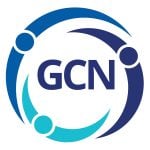LinkedIn™, the world’s largest professional network, has continuously evolved to meet the diverse needs of professionals worldwide. A significant leap in this evolution was the introduction of Collaborative Articles, a feature designed to enhance knowledge sharing and community building on the platform that starts with an AI-powered conversation.
What Are Collaborative Articles?
Collaborative Articles on LinkedIn™ allow users to author content up to 750 characters and add their subject matter expertise and unique perspectives on trending topics and industry developments.
To learn more about eligibility and other details, read the article I wrote after my trip to LinkedIn™’s New York City headquarters in June 2023, and the details on LinkedIn™’s knowledge base.
What is New with Collaborative Articles?
Collaborative articles started with viewers being able to provide emoji reaction upvotes if they enjoyed reading the content.
A thumbs down unhelpful “downvote” was subsequently added, and now viewers can reply to the contribution, to create more engagement. The replies can be up to 750 characters and receive emoji reaction upvotes. These emojis include a thumbs up, a clap, caring/support, a heart, a lightbulb, and a laughing emoji.
I can reply because I have earned at least one Top Voice Badge as a collaborative article contributor. Still, I wonder if the general public can respond if they have yet to be approved as a contributor.
Currently, there is no option to reply to a reply for a continuing two-way discussion or debate.
Benefits of Collaborative Articles
Enhanced Knowledge Sharing
Collaborative Articles facilitate a richer exchange of knowledge by allowing multiple experts to contribute. This is particularly beneficial for complex subjects, where different perspectives can lead to a deeper understanding and thought leadership.
Increased Visibility
Collaborative articles offer a unique opportunity for professionals looking to boost their visibility and establish thought leadership. Since the article appears on each contributor’s profile, it reaches a diverse audience, multiplying the exposure each author receives..
Networking Opportunities
Collaborative Articles serve as a networking tool, enabling contributors to connect with other professionals in their field. These engagements can lead to new professional relationships and opportunities for collaboration beyond LinkedIn™.
Continuous Learning
Contributors and readers alike benefit from the diverse insights shared in Collaborative Articles. Engaging with these articles can be a valuable learning experience for job seekers and those aiming to stay ahead in their careers.
Conclusion
In conclusion, LinkedIn™’s Collaborative Articles significantly advance professional content sharing. By fostering collaboration, enhancing visibility, and promoting continuous learning, they provide a powerful tool for professionals seeking to elevate their presence and expertise on the platform. Whether you’re a job seeker, a seasoned professional, or a thought leader, engaging with Collaborative Articles can provide tremendous benefits and opportunities for growth, not to mention enhancing your brand and visibility, discoverability, and credibility.
NEXT STEPS
- Subscribe to my newsletter on LinkedIn™ for bright ideas on how to manage your career.
- If you need a resume or LinkedIn™ profile to get you to your next step, book a call to chat!
- Join as a member at https://greatcareers.org/membership of the #1 business networking association on the Philadelphia Business Journal’s Book of Lists four years in a row!
- To support our charity at KeepOnSharing.com use the referral code Career
- Follow #GreatCareersPHL
AUTHOR BIO
Lynne M. Williams is the Executive Director of the Great Careers Network, a volunteer-run 501(c)3 nonprofit organization that provides career development and networking connections for 1) job seekers in career transition, including veterans, and 2) employed and self-employed for career management.
Aside from writing keyword-focused content for ATS resumes and LinkedIn™ profiles, Lynne is currently writing her doctoral dissertation on LinkedIn™ for Job Seekers. She is a contributing author on “Applying to Positions” in Find Your Fit: A Practical Guide to Landing the Job You Love, along with the late Dick Bolles, the author of What Color is Your Parachute?, and is also a speaker on career topics.




